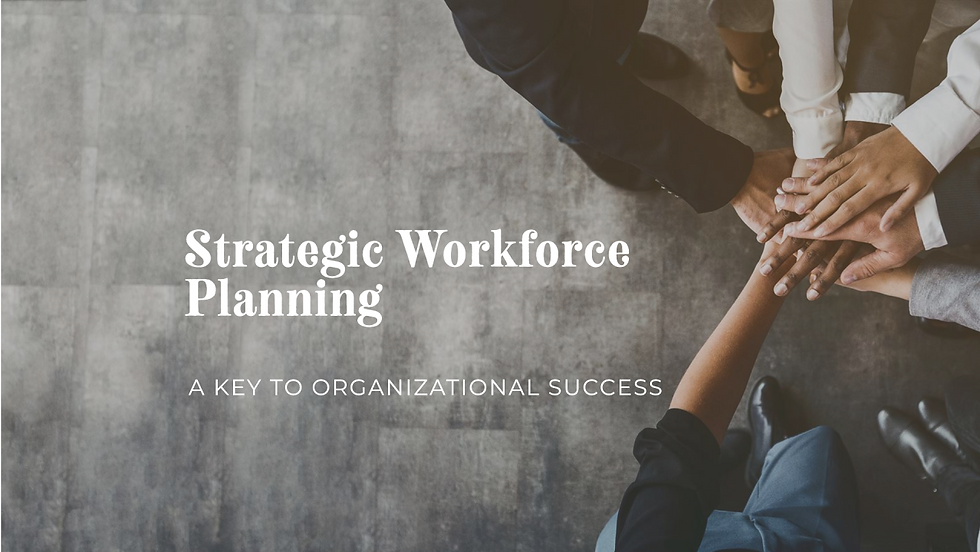Strategic Workforce Planning: A Key to Organizational Success
- Andrea Lucky

- Sep 16, 2024
- 2 min read

In today’s dynamic business environment, workforce planning has emerged as a critical strategy for organizations aiming to align their human resources with their long-term goals. As an HR consultant, I understand the transformative power of strategic workforce planning in driving organizational success. Let’s delve into why workforce planning is essential, the benefits it offers, and how to effectively implement it.
Why Workforce Planning is Important
Workforce planning is the process of analyzing and forecasting the needs of an organization to ensure it has the right people, with the right skills, at the right time. This strategic alignment is crucial for several reasons:
Aligning Workforce with Business Goals: Workforce planning ensures that your human resources are in sync with your business objectives, enabling you to meet both current and future demands.
Cost Management: By anticipating staffing needs, organizations can avoid the costs associated with overstaffing or understaffing, leading to more efficient resource allocation.
Adaptability: In a rapidly changing market, workforce planning helps organizations remain agile, allowing them to quickly respond to new opportunities and challenges.
Benefits of Workforce Planning
When done correctly, workforce planning offers numerous benefits:
Optimized Labor Costs: Effective workforce planning helps manage budgets by forecasting staffing needs, resulting in cost savings and efficient resource use.
Improved Recruitment and Retention: By identifying future talent needs, organizations can proactively recruit and retain the right people, reducing turnover and enhancing employee satisfaction.
Enhanced Productivity: Aligning the workforce with business goals ensures that employees are engaged and productive, contributing to overall organizational performance.
Informed Decision-Making: Workforce planning provides data-driven insights that support strategic HR decisions, from talent development to succession planning.
How to Conduct Workforce Planning
Implementing workforce planning involves several key steps:
Set Strategic Direction: Begin by understanding your organization’s long-term goals and objectives. This will guide your workforce planning efforts.
Conduct Workforce Analysis: Assess your current workforce to identify skills, competencies, and gaps. This involves analyzing both the supply (current employees) and demand (future needs) of your workforce.
Develop a Workforce Plan: Based on your analysis, create a plan that addresses identified gaps and aligns with your strategic goals. This plan should include strategies for recruitment, training, and development.
Implement and Monitor: Put your workforce plan into action and continuously monitor its progress. Adjust the plan as needed to respond to changes in the business environment.
Evaluate and Revise: Regularly evaluate the effectiveness of your workforce plan and make necessary revisions to ensure it remains aligned with your organizational goals.
Conclusion
Workforce planning is not just an HR function; it’s a strategic imperative that drives organizational success. By aligning your workforce with your business goals, managing costs, and enhancing productivity, you can ensure your organization is well-prepared to meet future challenges and opportunities.




Comments